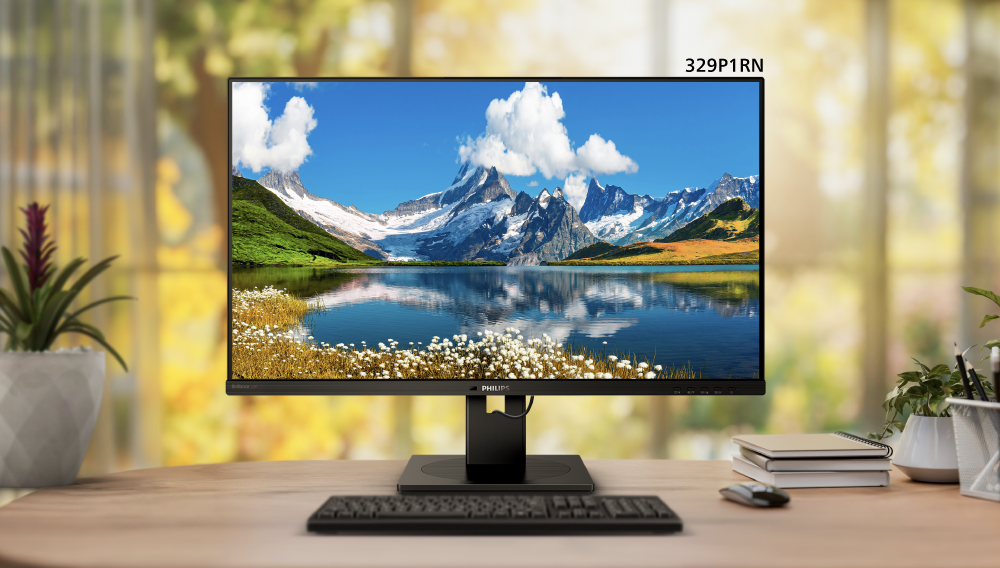![]() 2024/04/26 | MMDInnovationHub
2024/04/26 | MMDInnovationHub
In line with our commitment to sustainability, we believe that every small step towards a greener future matters. Philips Monitors has always prioritized the reduction of environmental impact through eco-friendly practices. Besides adhering to strict international environmental standards in our Green monitor series, we are also dedicated to improving the efficiency of raw materials and expanding the use of green, sustainable materials in the design and production of monitors.
A Collective Effort
Individuals and businesses play a crucial role in shaping a sustainable future and safeguarding the environment for future generations. While it may seem daunting, adopting sustainable practices is within reach for everyone. It requires a commitment to making small, gradual changes in our daily lives. By embracing this responsibility, we can collectively make a significant impact on the health of our planet.
 It is our shared responsibility to preserve the health of Mother Nature.
It is our shared responsibility to preserve the health of Mother Nature.
Small Steps
1. Reduce single-use plastics One of the most practical ways to decrease plastic waste is to reduce single-use plastics. They include:
In addition to the above, choose sustainable alternatives to plastics, such as:
2. Go paperless
The transition from physical documents to digital files can bring numerous benefits. The adoption of paperless practices not only improves business efficiency but also cuts costs. Other key benefits include:
Remember to embrace technology when going paperless by utilizing cloud storage solutions like Google Drive, Dropbox, or Microsoft OneDrive for document storage.
3. Save water
Besides personal cost-effectiveness, saving water is also environmentally sustainable. Here are some major ways to conserve water effectively.
 Every drop is a reminder that water is life.
Every drop is a reminder that water is life.
4. Recycling initiatives
Recycling is a fundamental aspect of the 3R practice: Reduce, Reuse, and Recycle. It encompasses a wide range of initiatives aimed at minimizing waste and promoting sustainable practices.
Large-scale recycling initiatives require collaboration between governments, non-governmental organizations, corporations, communities, and individuals to develop innovative solutions for recycling and waste reduction.
Besides recycling, repurposing also plays a significant role in sustainability efforts. Many household items can be recycled. Additionally, glass and plastic bottles or pots, paper rolls, clothing, books, egg cartons, light bulbs, and boxes, can be repurposed into new and creative items, reducing waste in landfills.
Furthermore, vegetable peelings and coffee grounds can be composted, providing nutrient-rich soil for gardening.
5. Support sustainable products like Philips Monitors Green series
Eco-friendly monitors offer 100% sustainable packaging, with carton boxes that are 100% recyclable and inner trays made of paper pulp instead of traditional Styrofoam.
Besides packaging, all body plastic parts of these Green monitors use 100% recyclable materials. For selected models, up to 85% post-consumer recycled plastics free of PVC and BFR, are used.
 Philips Monitors 34B1U5600CH comes with PowerSensor, an integrated 'people sensor' that utilizes harmless infrared signals to detect user presence, and automatically lowers monitor brightness when the user steps away from the desk.
Philips Monitors 34B1U5600CH comes with PowerSensor, an integrated 'people sensor' that utilizes harmless infrared signals to detect user presence, and automatically lowers monitor brightness when the user steps away from the desk.
Going beyond the physical aspects of displays and their packaging, Green monitors are equipped with technologies that increase power savings like PowerSensor and LightSensor. The PowerSensor, for instance, can save up to 70% in energy costs by automatically adjusting monitor brightness based on user presence. Meanwhile, for LightSensor, ambient light is sensed, and screen brightness is automatically adjusted to save power.
To further reduce carbon footprint, Green monitors come with a 0 watt hard switch, to completely cut off AC power when the monitor is turned off.
 Philips Green monitors
Philips Green monitors
In general, Green monitors have a super energy-efficient design, incorporating a highly efficient power supply to achieve a higher energy class while delivering excellent performance.